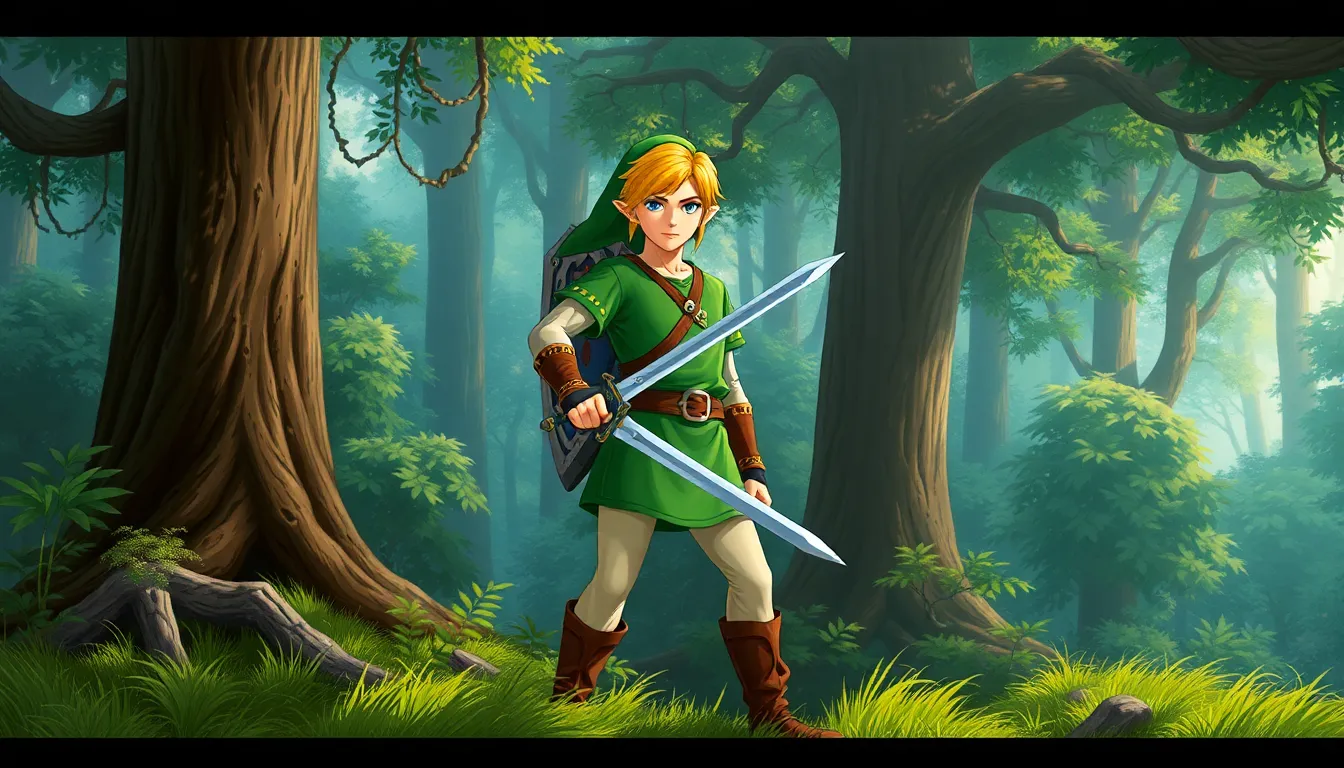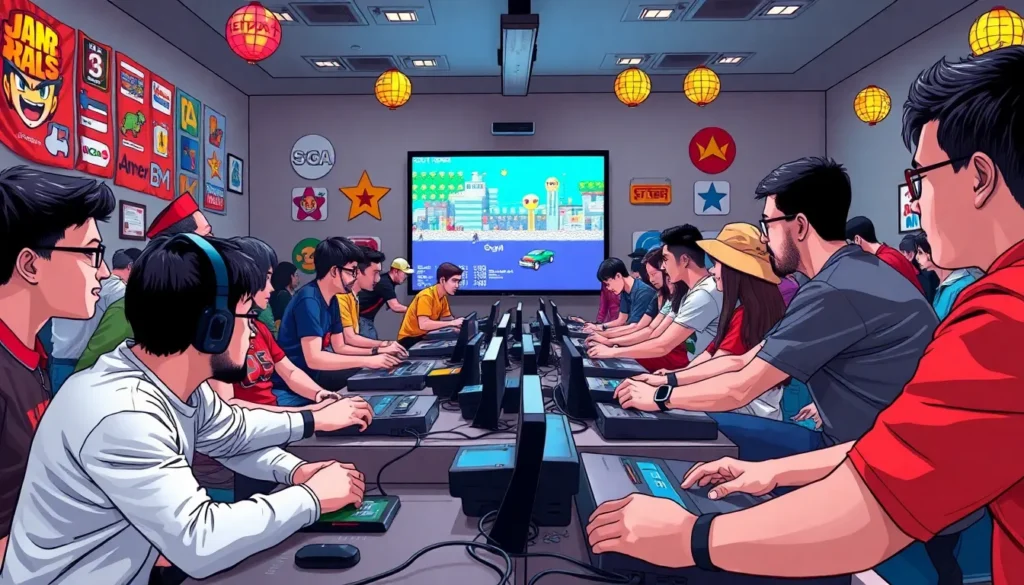In the realm of gaming, few titles hold as much legendary status as The Legend of Zelda: Ocarina of Time on the Nintendo 64. Released in 1998, this masterpiece whisked players away to the enchanting land of Hyrule, where they battled evil, solved puzzles, and made friends with talking trees. Who knew saving the world could be so much fun?
With its captivating storyline and groundbreaking 3D graphics, Ocarina of Time redefined adventure gaming. It’s not just a game; it’s a rite of passage for every gamer who’s ever dreamed of wielding a sword and wearing a green tunic. So grab your controller and prepare to relive the magic that made Link an icon—because this isn’t just nostalgia; it’s a quest that never truly ends.
Table of Contents
ToggleOverview of Zelda Nintendo 64
“The Legend of Zelda: Ocarina of Time” revolutionized action-adventure gaming when it launched in 1998 on the Nintendo 64. Exploration features captivating environments that immerse players in Hyrule’s beauty. Players navigate dungeons, solve puzzles, and battle enemies, showcasing the game’s engaging mechanics.
Graphics set the standard for 3D games, with vibrant colors and detailed character models. Innovations, such as the lock-on targeting system, transformed combat and made engaging foes more intuitive. Music plays a critical role in the overall experience, with iconic themes complementing the game’s emotional depth.
Game mechanics encourage players to utilize items creatively. Link’s arsenal expands as players progress, emphasizing the importance of strategy in tackling challenges. Characters enrich the narrative, from Princess Zelda to the sinister Ganondorf, further engaging players with their backstories and interactions.
The cult following surrounding the game stems from its excellent design and memorable gameplay. It set a benchmark for future titles in the franchise and inspired countless games across various platforms. Players often reminisce about the sense of adventure the game instills.
Cultural impact remains significant, as “Ocarina of Time” continues to influence game design and storytelling in modern titles. Tournaments, fan creations, and various merchandise reflect the strong community that the game fostered. As new generations discover Link’s adventures, the legacy of “Ocarina of Time” endures, solidifying its place in gaming history.
Gameplay Mechanics



“The Legend of Zelda: Ocarina of Time” features dynamic gameplay mechanics that enhance the player experience. Engaging elements like exploration, combat, and puzzle-solving create a rich and memorable adventure.
Exploration and Adventure
Exploration defines the adventure in Hyrule. Link travels across diverse environments such as forests, mountains, and dungeons. Players encounter secrets and collectibles that reward curiosity. The open-world design encourages revisiting areas with newly acquired items. Each location reveals unique challenges, fostering a sense of discovery. Side quests and character interactions enrich the narrative, deepening immersion. Locations like Kakariko Village offer backstory and quests that enhance gameplay. Gamers uncover hidden paths, creating an extensive gameplay experience that captivates.
Combat System
The combat system introduces a mix of strategy and action. Players utilize various weapons and items, such as swords and bombs, to defeat foes. Targeting enemies with the Z-targeting system allows for precise attacks and dodges. Combat feels intuitive, fostering skills essential for mastering challenging foes. Each enemy type requires specific strategies, encouraging adaptation. As players progress, they develop their combat style, utilizing magic and items creatively. Boss battles, like with Ganondorf, test skills and strategy, solidifying the game’s reputation for engaging combat scenarios.
Graphics and Design
The graphics and design of “The Legend of Zelda: Ocarina of Time” marked a significant evolution in the realm of 3D gaming. Vibrant colors and detailed textures characterized the visual presentation, creating an immersive world that captivated players.
Visual Style
Visual style emphasized a colorful palette and dynamic environments. Forests, lakes, and dungeons featured distinct aesthetics that reflected their unique atmospheres. The game utilized a cel-shaded effect that made character animations fluid and engaging. Environmental elements, such as weather effects and day-night cycles, added realism. These graphics set a new benchmark for games of its time, influencing future titles in the action-adventure genre.
Character Designs
Character designs showcased diverse and memorable entities. Link, with his iconic green tunic and elf-like features, became a symbol of heroism. Princess Zelda presented a striking contrast with her elegant dresses and regal demeanor, captivating players. Ganondorf, as the primary antagonist, embodied dark power with menacing features and elaborate armor. Additionally, supporting characters like Navi and Saria enriched the narrative through their distinct designs and personalities. These character portrayals contributed to the game’s engaging storytelling, deepening connections with players.
Impact on Gaming Culture
“The Legend of Zelda: Ocarina of Time” left an indelible mark on gaming culture, influencing players and developers alike. Its groundbreaking design and compelling mechanics reshaped expectations for games.
Legacy of Zelda Nintendo 64
The legacy of “Ocarina of Time” transcends its release year, consistently regarded as a pinnacle in gaming history. Players remember its intricate story and character depth, showcasing the series’ ability to craft unforgettable narratives. The game became synonymous with adventure, embodying the spirit of exploration. Through fan conventions, speedrunning events, and online forums, enthusiasm for Zelda continues to thrive. Innovations introduced in the game set expectations for narrative complexity and world-building in future titles, establishing a benchmark within the industry.
Influence on Future Titles
Numerous titles draw inspiration from “Ocarina of Time,” including modern action-adventure games. Game designers incorporate mechanics like open-world exploration and sit with players navigating expansive environments. The Z-targeting system found in later games showcases how developers prioritize fluid combat mechanics. Franchises such as “Dark Souls” and “Breath of the Wild” reflect its influence, featuring challenging puzzles and richly crafted worlds. Elements introduced in this classic continue to inspire new generations of developers, ensuring its principles resonate in today’s gaming landscape.








